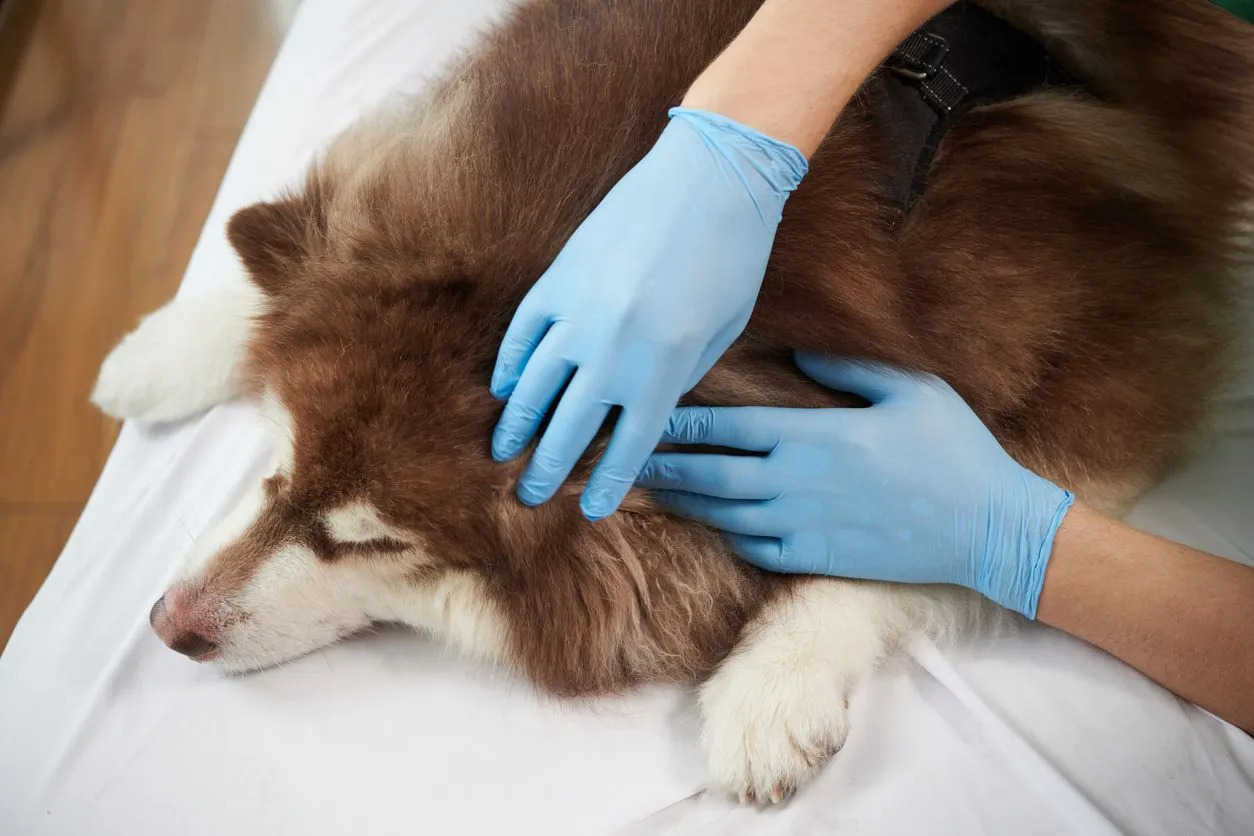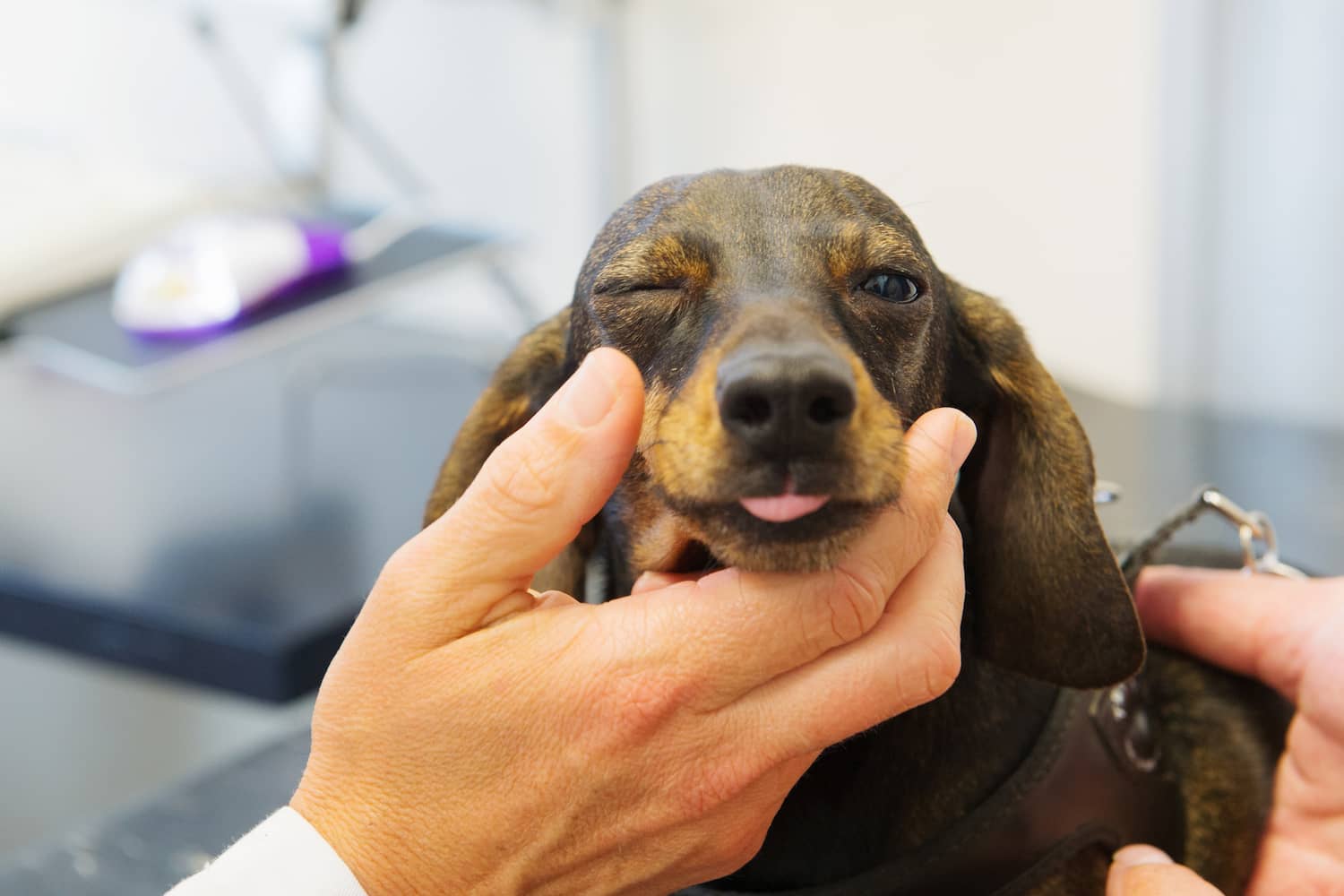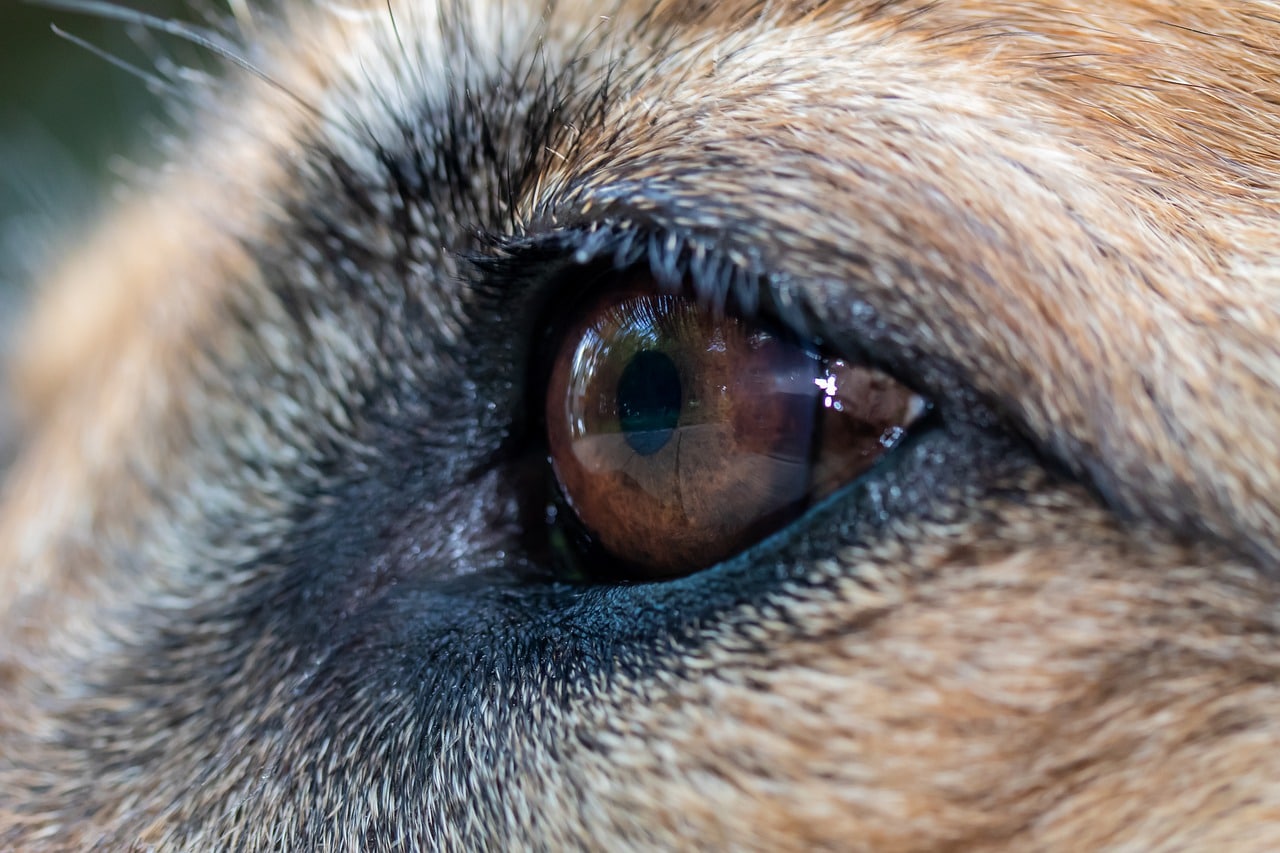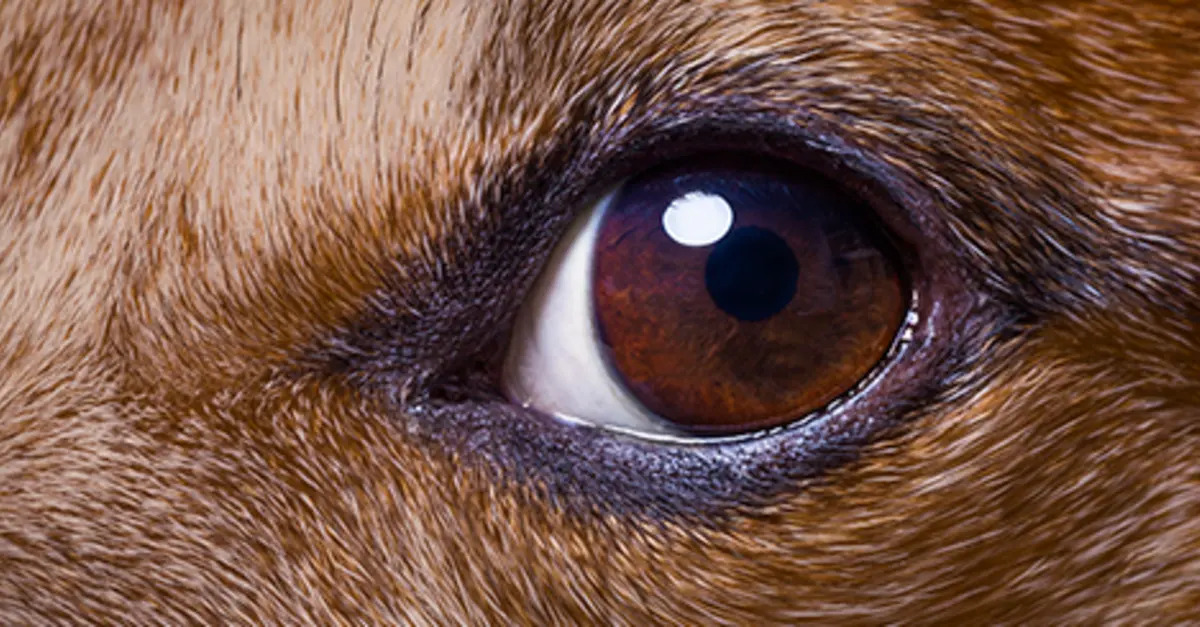Home>Health & Wellness>Common Health Issues>Eye and Ear Health>Why Does My Dog Have A Lazy Eye


Eye and Ear Health
Why Does My Dog Have A Lazy Eye
Published: February 12, 2024
Learn about the causes and treatment options for your dog's lazy eye, and how it relates to their overall eye and ear health. Gain insights on managing eye and ear conditions in dogs.
(Many of the links in this article redirect to a specific reviewed product. Your purchase of these products through affiliate links helps to generate commission for Pawsomeoldies.com, at no extra cost. Learn more)
Table of Contents
Introduction
When you look into your dog's eyes, you expect to see their bright, alert gaze reflecting their vibrant personality. However, if you notice that one of their eyes seems to be wandering or not focusing properly, you might wonder, "Why does my dog have a lazy eye?" A lazy eye, also known as strabismus or exotropia, can affect dogs just as it does humans. It can be a concerning sight for pet owners, prompting questions about the causes, symptoms, and treatment options for this condition.
Understanding the underlying reasons for a lazy eye in dogs is crucial for providing the best care and support for our furry companions. This article delves into the intricacies of this condition, shedding light on its potential causes, symptoms, and available treatment options. By gaining insight into these aspects, pet owners can be better equipped to recognize and address a lazy eye in their beloved canine friends.
Read more: Why Does My Dog Have A Bump By Her Eye
What is a lazy eye in dogs?
A lazy eye, also known as strabismus or exotropia, in dogs refers to a condition where one eye deviates or turns outward, failing to align with the other eye. This misalignment can be constant or intermittent, and it may affect one or both eyes. When a dog has a lazy eye, the affected eye may appear to be looking in a different direction than the other eye, giving the impression of a lack of focus or coordination.
This condition can be congenital, meaning it is present at birth, or it can develop later in life due to various factors. In some cases, a lazy eye in dogs may be accompanied by other visual abnormalities, such as reduced vision or depth perception. It's important to note that a lazy eye in dogs is not merely a cosmetic issue; it can impact their overall well-being and quality of life.
The misalignment of the eyes in dogs with a lazy eye can result from a disruption in the normal function of the eye muscles or the nerves that control them. This can lead to the affected eye turning outward, causing the brain to receive conflicting visual input from each eye. As a result, the brain may start to favor the input from the stronger eye, further exacerbating the misalignment.
It's essential for pet owners to understand that a lazy eye in dogs is not a behavioral problem or a sign of disobedience. Instead, it is a physical condition that requires attention and, in some cases, intervention to prevent potential complications. By recognizing the characteristics of a lazy eye and seeking appropriate care, pet owners can help their dogs maintain optimal eye health and overall well-being.
Causes of lazy eye in dogs
The causes of a lazy eye in dogs can be multifaceted, stemming from a combination of genetic predispositions, developmental factors, and underlying health conditions. Understanding these potential causes is crucial for identifying the root of the issue and determining the most effective course of action for addressing the condition in canine companions.
Genetic Predispositions
In some cases, certain dog breeds may have a genetic predisposition to developing a lazy eye. Breeds such as Beagles, Dachshunds, and Pugs are known to be more susceptible to this condition. Genetic factors can influence the development and function of the eye muscles, potentially leading to misalignments and deviations in the eyes. Additionally, inherited traits related to eye structure and function can contribute to the manifestation of a lazy eye in dogs.
Developmental Abnormalities
During the early stages of a dog's life, developmental abnormalities or irregularities in the growth of the eye muscles and surrounding structures can contribute to the onset of a lazy eye. Factors such as improper muscle development, asymmetrical growth of the eyes, or anomalies in the neural pathways responsible for eye movement coordination can lead to the misalignment of the eyes. These developmental issues may manifest as a lazy eye in dogs and can vary in severity depending on the underlying developmental factors.
Read more: Why Does My Dog Have One Dilated Eye?
Neurological Disorders
Neurological disorders affecting the nerves and pathways responsible for controlling eye movements can also play a role in the development of a lazy eye in dogs. Conditions such as cranial nerve palsies, which involve the impairment of specific cranial nerves that govern eye movements, can result in the inability of the affected eye to align with the other eye properly. Additionally, neurological conditions that impact the brain's ability to process visual information and coordinate eye movements can contribute to the manifestation of a lazy eye in dogs.
Trauma or Injury
Physical trauma or injury to the eye or surrounding structures can lead to the development of a lazy eye in dogs. Blunt force trauma, penetrating injuries, or damage to the muscles and nerves controlling eye movements can disrupt the normal alignment and coordination of the eyes. As a result, the affected eye may exhibit signs of strabismus or exotropia, reflecting the impact of the trauma on the eye's functionality and positioning.
Underlying Health Conditions
Certain underlying health conditions, such as eye infections, inflammation, or tumors, can contribute to the occurrence of a lazy eye in dogs. These conditions can directly affect the structures and functions of the eyes, leading to deviations and misalignments. Additionally, systemic health issues that impact overall muscle tone and coordination can indirectly influence the development of a lazy eye in dogs, highlighting the interconnected nature of eye health and general well-being.
By recognizing the diverse array of potential causes for a lazy eye in dogs, pet owners can gain valuable insights into the underlying factors contributing to this condition. This understanding can pave the way for proactive measures to address the causes and provide appropriate support for dogs experiencing a lazy eye, ultimately promoting their visual health and overall quality of life.
Symptoms of lazy eye in dogs
Identifying the symptoms of a lazy eye in dogs is essential for recognizing the presence of this condition and taking appropriate measures to address it. While the outward misalignment of the affected eye is a prominent indicator, several other symptoms and visual cues can signal the presence of a lazy eye in canine companions.
-
Visible Eye Misalignment: The most apparent symptom of a lazy eye in dogs is the visible misalignment of one eye, causing it to deviate or turn outward in comparison to the other eye. This misalignment can be constant or intermittent, and it may become more pronounced during specific activities or when the dog is experiencing fatigue or stress.
-
Abnormal Eye Movements: Dogs with a lazy eye may exhibit abnormal eye movements, such as rapid flickering or twitching of the affected eye. These irregular movements can be indicative of the underlying challenges in coordinating the positioning and movements of the affected eye, reflecting the impact of the condition on the eye's functionality.
-
Squinting or Blinking: Dogs experiencing a lazy eye may display increased squinting or blinking in the affected eye. This behavior can be a response to the visual discomfort or strain associated with the misalignment, as the dog attempts to alleviate any discomfort or visual disturbances caused by the condition.
-
Head Tilt or Turn: In some cases, dogs with a lazy eye may adopt a head tilt or turn to compensate for the misalignment of their eyes. This adjustment in posture can help them align their vision more effectively, minimizing the visual discrepancies resulting from the lazy eye.
-
Reduced Depth Perception: A lazy eye can impact a dog's depth perception, affecting their ability to accurately judge distances and spatial relationships. This can manifest in behaviors such as hesitance when navigating obstacles or challenges in accurately gauging the proximity of objects in their environment.
-
Visual Disorientation: Dogs with a lazy eye may experience visual disorientation or confusion, particularly when attempting to focus on objects or track moving stimuli. This can lead to hesitancy in engaging with visual stimuli and may affect their overall confidence in navigating their surroundings.
-
Altered Visual Behavior: Changes in a dog's visual behavior, such as reluctance to make eye contact, avoidance of specific visual stimuli, or challenges in maintaining visual attention, can indicate the presence of a lazy eye. These alterations in visual behavior reflect the impact of the condition on the dog's visual perception and interaction with their environment.
By recognizing these symptoms of a lazy eye in dogs, pet owners can gain valuable insights into the visual challenges their canine companions may be facing. This awareness can prompt proactive measures to seek veterinary evaluation and explore appropriate treatment options to support the visual health and well-being of dogs affected by a lazy eye.
Read more: Why Does My Dog Have A White Spot In His Eye
Treatment options for lazy eye in dogs
Addressing a lazy eye in dogs involves a multifaceted approach aimed at managing the underlying causes, optimizing visual function, and promoting overall eye health. While the specific treatment options may vary based on the severity of the condition and the contributing factors, several strategies and interventions can be employed to support dogs affected by a lazy eye.
Veterinary Evaluation
The first step in addressing a lazy eye in dogs is seeking a comprehensive veterinary evaluation to assess the extent of the misalignment, identify any underlying health conditions or neurological factors contributing to the condition, and determine the most suitable course of action. A thorough examination of the eyes, including visual assessments, ocular reflex testing, and neurological evaluations, can provide valuable insights into the specific challenges posed by the lazy eye and guide the development of a tailored treatment plan.
Management of Underlying Health Conditions
If the lazy eye in a dog is associated with underlying health conditions, such as eye infections, inflammation, or neurological disorders, targeted treatment protocols may be recommended to address these contributing factors. This can involve the administration of medications, such as antibiotics or anti-inflammatory drugs, to alleviate the underlying health issues and minimize their impact on the affected eye.
Vision Therapy and Rehabilitation
Vision therapy and rehabilitation programs tailored to the unique needs of dogs with a lazy eye can play a pivotal role in optimizing visual function and promoting eye coordination. These programs may encompass specialized exercises, visual stimulation techniques, and environmental modifications designed to enhance the affected eye's alignment, strengthen eye muscles, and improve overall visual acuity. Additionally, sensory integration activities and targeted training can help dogs adapt to the challenges posed by the lazy eye and develop compensatory mechanisms to support their visual capabilities.
Read more: Why Does My Dog Have A Red Spot In Her Eye
Surgical Interventions
In cases where the misalignment of the eye is severe or significantly impairs the dog's visual comfort and functionality, surgical interventions may be considered to address the underlying anatomical abnormalities contributing to the lazy eye. Surgical correction of muscle imbalances, repositioning of the eye structures, or realignment procedures can be performed by veterinary ophthalmologists to restore proper eye alignment and improve the dog's visual comfort and coordination.
Ongoing Monitoring and Support
Following the implementation of treatment interventions, ongoing monitoring and support are essential to track the dog's progress, assess the effectiveness of the chosen treatment modalities, and make any necessary adjustments to the management plan. Regular veterinary check-ups, visual assessments, and behavioral evaluations can provide valuable feedback on the dog's response to treatment and guide the refinement of the supportive measures to best address their visual needs.
By embracing a comprehensive and tailored approach to treatment, pet owners can play a pivotal role in supporting their canine companions affected by a lazy eye, fostering optimal visual health, and enhancing their overall well-being. Collaborating closely with veterinary professionals and implementing targeted interventions can empower pet owners to provide the necessary care and support for dogs navigating the challenges posed by a lazy eye.
When to see a veterinarian
Recognizing the signs of a lazy eye in dogs is a crucial first step, but knowing when to seek veterinary care is equally important. If you observe persistent misalignment of your dog's eyes, abnormal eye movements, or any of the aforementioned symptoms associated with a lazy eye, it is imperative to schedule a veterinary evaluation promptly. Early intervention can significantly impact the effectiveness of treatment and the overall well-being of your canine companion.
Additionally, if you notice changes in your dog's visual behavior, such as reluctance to make eye contact, altered responses to visual stimuli, or indications of visual discomfort, seeking veterinary guidance becomes paramount. These behavioral shifts can serve as valuable indicators of underlying visual challenges, including the presence of a lazy eye, and warrant professional assessment and intervention.
Furthermore, if your dog has experienced any trauma or injury to the eye or head region, it is essential to seek veterinary attention promptly, even if immediate symptoms are not evident. Traumatic incidents can lead to latent effects on the eyes and visual function, necessitating thorough evaluation by a veterinarian to ensure the absence of underlying complications, including the development of a lazy eye.
In cases where a lazy eye is suspected due to breed predispositions or genetic factors, proactive veterinary consultation can provide valuable insights into potential risk factors and preemptive measures to support your dog's visual health. Early identification of genetic predispositions can facilitate proactive management strategies and tailored interventions to mitigate the impact of a lazy eye on your dog's vision.
Ultimately, the decision to seek veterinary care for a suspected lazy eye in your dog should be guided by a proactive and attentive approach to their visual well-being. By promptly involving veterinary professionals, you can gain comprehensive insights into the underlying factors contributing to the lazy eye, explore appropriate treatment options, and embark on a collaborative journey to support your dog's visual health and overall quality of life.












